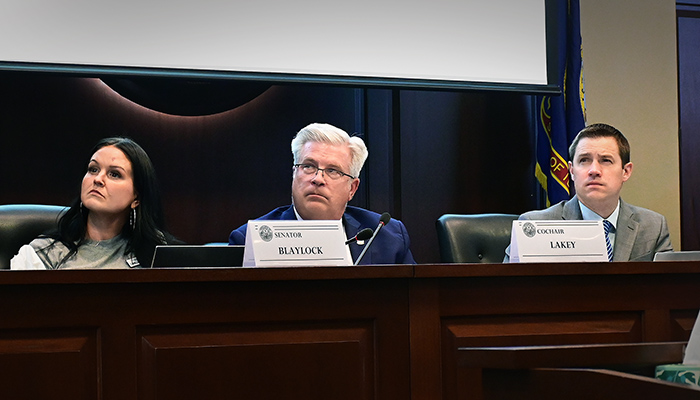Yesterday afternoon, the DOGE Task Force met for the first time, taking public testimony along the way. If you want the play-by-play, check out my live tweet thread here. Co-chairs Rep. Jeff Ehlers and Sen. Todd Lakey were present, along with Sen. Camille Blaylock and Rep. Josh Tanner. Reps. Heather Scott and Dustin Manwaring attended virtually, as did Sen. Carl Bjerke. Democratic Sen. Carrie Semmelroth did not attend, so far as I could see.
Rep. Ehlers opened the meeting by outlining the committee’s objectives:
- Consolidating or eliminating agencies
- Reducing the number of government employees
- Reviewing and reducing state employee travel
He emphasized that while this project will take time, it will be “results-oriented.” Ehlers also announced a new website where members of the public can submit specific ideas to make Idaho government more efficient. Make sure to bookmark https://legislature.idaho.gov/doge/ and make good use of this resource.
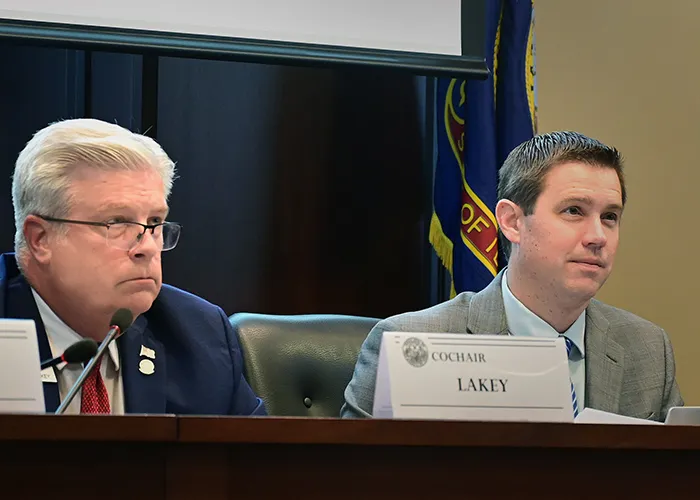
Jared Tatro of the Legislative Services Office (LSO) then provided an overview of the size and scope of Idaho’s executive branch. He explained that the last major structural reform took place in 1972. That effort, overseen by Gov. Cecil Andrus and ratified by voters through Senate Joint Resolution 132, capped the executive branch at 20 departments, plus the offices of the seven elected constitutional officers.
But as Tatro showed, those departments now house hundreds of sub-entities: boards, commissions, divisions, and self-governing agencies, many of which operate with minimal oversight or visibility.
The amendment adopted via SJR 132 became Article IV, Section 20 of the Idaho Constitution:
DEPARTMENTS LIMITED.All executive and administrative officers, agencies, and instrumentalities of the executive department of the state and their respective functions, powers, and duties, except for the office of governor, lieutenant governor, secretary of state, state controller, state treasurer, attorney general and superintendent of public instruction, shall be allocated by law among and within not more than twenty departments by no later than January 1, 1975. Subsequently, all new powers or functions shall be assigned to departments, divisions, sections or units in such a manner as will tend to provide an orderly arrangement in the administrative organization of state government. Temporary agencies may be established by law and need not be allocated within a department; however, such temporary agencies may not exist for longer than two years.
The result was a framework of 20 departments under gubernatorial supervision. But hundreds of divisions, agencies, and commissions now operate within that framework, including the wildcard “Department of Self-Governing Agencies.” That’s not truly a department; it has no board or director. Instead, it serves as a parking spot for various entities like the Commission on Hispanic Affairs, the Historical Society, and the Commission for Libraries.
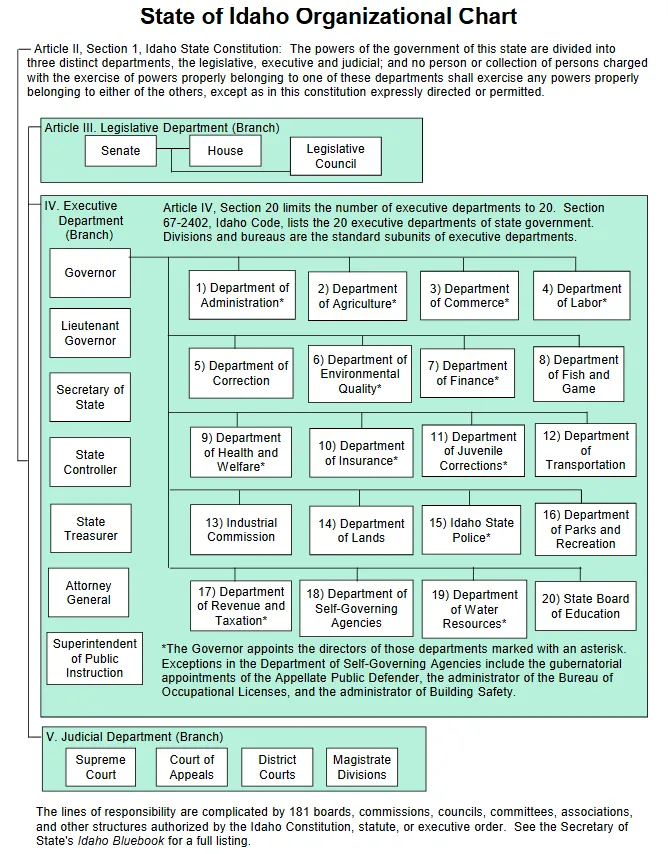
The purpose of the 1972 reorganization wasn’t necessarily to make government smaller, but to make it more efficient and responsive to the public. Amy Fecher, who led Arkansas’s Department of Transformation and Shared Services, gave a presentation regarding her state’s restructuring process. She emphasized that her state’s recent reorganization had the same goal: streamline, not slash.
In her remarks to the task force, Fecher said Gov. Asa Hutchinson’s initiative sought to avoid layoffs, partly due to pushback from state employees. Of course, if a position is wasteful, duplicative, or outside the proper bounds of government, it ought to be eliminated—regardless of the sob stories that follow. (Just look at how the media covered layoffs at the U.S. State Department earlier this month.) People get laid off in the private sector all the time, especially when companies restructure and reorganize to better serve their shareholders. It’s a necessary part of the process.
That said, it’s an open question about how many positions in Idaho state government are funded but unfilled. It’s possible we could cut millions in personnel costs without laying off a single person. Toward the end of the meeting, both Sen. Lakey and Rep. Tanner asked how many positions had been fully funded but never filled. Is it possible agencies are requesting funds for positions they don’t intend to fill, just to hold on to the money?
Fecher explained that Arkansas eliminated about 2,000 positions via attrition—employees retired or left, and their jobs were not replaced. The number of cabinet-level departments dropped from 42 to 15, all through a single 2,000-page bill passed in 2019 with near-unanimous support.
But how much did it save? Fecher wasn’t sure. She opened her presentation by citing one merger that saved $6 million, but when Sen. Blaylock asked about the overall savings from the restructuring, Fecher didn’t have a total figure. Instead, she urged Idaho lawmakers to begin tracking savings from Day One. During a later presentation by the State Controller’s Office, Sen. Lakey asked analyst Greg Schenk whether his office could assist with that effort, and Schenk confirmed that they could.
Returning to Tatro’s presentation, one striking point was that it took multiple staffers working many hours just to map the breadth of Idaho’s executive branch. Our state government has grown so large that there may be no single person—not even the governor—who fully understands its scope.
Tatro explained that agencies can be created in several ways:
- Constitutional amendment, such as the State Board of Education
- Idaho Code, passed by the Legislature as with the Dept. of Parks and Recreation
- Ballot initiative, such as the Fish and Game Commission, established in 1938
- Executive order, such as the Office of Energy and Mineral Resources
Rep. Tanner asked multiple questions about the latter. Tatro said executive orders must be renewed every four years, which Idaho governors have done consistently. But since the Office of Energy and Mineral Resources is now referenced throughout Idaho Code, what happens if a governor stops renewing it? Tatro said it’s ultimately up to the Legislature.
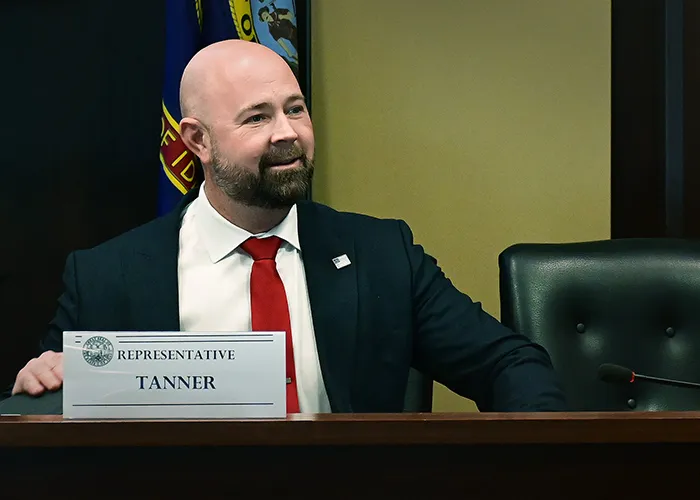
Tanner also raised concerns about public/private hybrids like Idaho Public Television. Tatro noted that agencies like that as well as the Dept. of Parks and Recreation accept private donations, and that such funding arrangements are allowed by law for self-governing agencies and special-purpose districts. Tanner requested a complete list of those agencies.
He also asked about the Commission on Hispanic Affairs and the Women’s Commission. Tatro said the former is a self-governing agency, while the latter is housed within the governor’s office, but noted that JFAC defunded the Women’s Commission years ago, even though it still technically exists in statute.
Finally, Tanner asked about where to find comprehensive information about state employee travel costs as well as how to track so-called continuous expenditures that have been taken off book. Tatro said he will look into it.
That last issue was brought up again by Fred Birnbaum of the Idaho Freedom Foundation (IFF) during his public testimony yesterday afternoon. He submitted a document to members of the committee, which he also shared with me to share with you:
Birnbaum explained the problem in a detailed article from April:
It appears that overall all funds spending only increased 1.5% from the prior year. However, note that while General Fund spending for education, public safety, and general government has increased by 6.8%, Dedicated Funds for items such as roads, bridges, and dedicated agencies like Fish and Game have decreased by 14.6%. What is going on? Well, what has happened is that over the last couple of years, additional budget items have been moved “off the books” and classified as “continuously appropriated funds.” This means that they are not in the above-reported spending categories.
Basically, what happens is that certain budgets are taken out of the legislative process and simply continually appropriated year by year. Many of these are connected to dedicated funds such as park fees, but without the budgets being included in the information processed by the Joint Finance-Appropriations Committee (JFAC) there’s simply no way to know.
The result, as Birnbaum points out, is that year after year comparisons are not apples to apples. If a certain budget is part of the JFAC process one year, and then moved to continuous appropriation and taken off book, it should not be counted as a reduction in spending. In his document, Birnbaum urged the task force to fix this problem:
We urge the DOGE Task Force to formally recommend that a portion of the continuously appropriated funds be returned to annual budgeting. For those funds that remain continuously appropriated, projections should be provided so that legislators can see the total change in spending. Because what is not measured can’t be managed, and it is the fiduciary duty of the Legislature to manage all state appropriations.
In his closing remarks, Sen. Lakey said he’d like to explore this issue further, admitting that he approaches things from a policy perspective, not a fiscal one.
Greg Schenk’s presentation for the Office of the State Controller focused on Transparent Idaho, the website that allows citizens and lawmakers alike access to fairly detailed financial data, not only for state government but for cities, counties, and school districts as well. While Schenk explained the many pieces of information that Transparent Idaho offers, members of the committee were concerned about what it lacks. Reps. Tanner and Scott both pointed out that many of the spending entries in Transparent Idaho were missing information about the purpose of the expenditure.
Schenk replied that this has been a point of debate within his office, and ultimately they were concerned that state employees could be including confidential or personally-identifiable information on those invoices. Tanner pushed back, pointing out that invoices from state agencies are already subject to public record, so why not include details from those invoices explaining what the purchase was for? After all, the public deserves transparency with regard to spending public money.
Tanner went on to ask about how Transparent Idaho might flag misappropriation of public funds, as was the case when the Dept. of Health and Welfare distributed a $6 million grant specifically earmarked for school-aged children to an obviously leftist nonprofit serving preschool children. Schenk said that they were working on installed a new module to evaluate governance, risk, and compliance, so stay tuned for that.
Public testimony rounded out the day. In addition to myself, Daniel Murphy, Jackie Davidson, and David Pettinger spoke in person, while Fred Birnbaum, Brenda Gilchrist, and Serge Brown joined remotely.
Murphy made an interesting point: why do we still fund the Launch Grant, which gives high school graduates $8,000 for workforce training, when the U.S. military already provides job training and college funding?
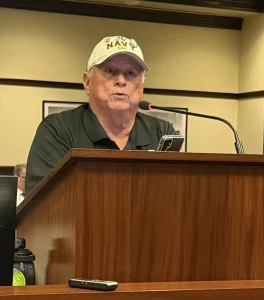
Having the opportunity to go first, I simply urged the committee to not allow this unique opportunity to seriously reform our government pass them by. Even though there will surely be people disappointed that the committee did not immediately vote to abolish all government, there are still significant things it can accomplish.
Will the task force accomplish its goals? All I can say is let’s wait and see. As I said earlier this week, we should temper our expectations, but we should also give the committee a chance to do its work. I can already hear the voices telling me that I’m being too optimistic, that this is all theater, that this is just make-work for what should have already been done on JFAC. Let’s all calm down and see how it goes. I recommend ignoring anyone who calls this initiative a failure before it even begins for their own political purposes.
Even if you’re convinced that this is all theater, then call their bluff. Go through Transparent Idaho, the Budget Book, and Idaho Code and submit ideas for restructure, reform, and elimination to the new Government Efficiency Portal. Do your part, and then hold your elected representatives accountable for whatever the results might be. I know Sen. Brian Lenney has already been submitting ideas. IFF will be offering $1 billion in suggested cuts as well.
Complaining about government on social media is easy; actually reforming it is more difficult. As Fred Birnbaum said, “what gets measured, gets managed.” How can we hope to change what we don’t fully understand? If this task force can do the work of mapping the size and scope of Idaho government, then we will be in a great position to actually make change.
This moment in history gives us opportunities we lacked yesterday and might not have tomorrow. Let’s take advantage of it to move our government back toward its proper size and scope, making it truly a government by and for the people of Idaho.
Feature image by Daniel Murphy
Gem State Chronicle is a reader-supported publication. To receive new posts and support my work, consider becoming a free or paid subscriber.
About Brian Almon
Brian Almon is the Editor of the Gem State Chronicle. He also serves as Chairman of the District 14 Republican Party and is a trustee of the Eagle Public Library Board. He lives with his wife and five children in Eagle.


